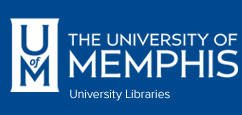
Electronic Theses and Dissertations
Identifier
3734
Date
2016
Document Type
Dissertation
Degree Name
Doctor of Education
Major
Leadership and Policy Studies
Concentration
Educational Leadership
Committee Chair
Reginald Green
Committee Member
Ron Davis
Committee Member
Charissee Gulosino
Committee Member
DeAnna Owens
Abstract
If schools are to succeed, children must be provided with more than a school can accomplish alone (Barbour et al., 2010). The need to involve community in the education process to offer services that make students successful and to have these services within the school building are all critical aspects of the community school model (Dryfoos, 1994; Dryfoos et al., 2005; Kronick, 2002, 2005). Literature suggest that school and community collaboration is not a foreign concept. Parents and neighborhoods working together to enhance academics and strengthen the community can be traced back to the reform era of the early twentieth century. More is accomplished when schools, families and communities work together to promote and improve schools (Epstein, 2010). Community schools have the capacity to do more of what is needed to ensure young people's success. Unlike traditional public schools, community schools link school and community resources as an integral part of their design and operation (Blank et al., 2003). As a result of a powerful and supportive learning environment, students, families, schools, and communities become proponents for community schools that emphasize the importance of school functioning, economic competitiveness, student well-being, and community health and development (Sanders, 2006). There is a lack of current awareness, despite the research, on the processes and outcomes of the school and community partnership. This narrative utilizes community school's authentic experiences from multiple sites. The researcher attempts to better comprehend the processes and outcomes of the community school model. This qualitative case study is designed to examine the operational processes and outcomes of the community school model in an elementary setting that was used to resuscitate the diminishing phenomena of school and community collaboration. The researcher strives to the develop and understanding of the perceptions of parents, schools, teachers and community partners regarding the capacity of school and community collaboration. The evidence for this qualitative case study is collected from face-to-face interviews, open-ended survey questions, non-participatory site observations and document reviews. An analysis of the data, which involves recognizing categories or themes in the responses of the research participants, is conducted. As a result o the analysis, the account of live experiences, is used to provide a detail account of the processes and outcomes of the school and community partnership.
Library Comment
Dissertation or thesis originally submitted to the local University of Memphis Electronic Theses & dissertation (ETD) Repository.
Recommended Citation
Clark, LaWanda Michelle, "A Case Study that Examines the Community School Model in Elementary School Settings in West Tennessee" (2016). Electronic Theses and Dissertations. 1466.
https://digitalcommons.memphis.edu/etd/1466


Comments
Data is provided by the student.